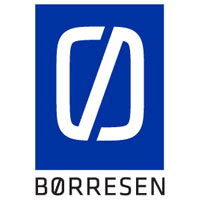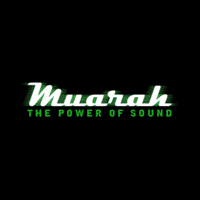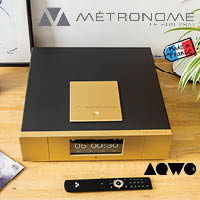Rockport Technologies Lyra Loudspeaker
“If the mountain will not come to Muhammad, then Muhammad must go to the mountain”.
In this case, the mountain is the Toronto home of Rockport Technologies’ authorized dealer Angie Lisi, where I spent some time with fabulous monoliths also known as the Rockport Technologies Lyra Loudspeaker ($190,000/pair). All prices in this review are USD.
At over 250 kgs each, moving these speakers is a team affair. Stairs? Fuhgeddaboudit! Seriously, the moving team for American Sound of Canada, Angie’s long-time brick-and-mortar establishment, was already planning the upcoming move of her floor speakers to their new home.
My sincere thanks to Angie (and her staff) for the warm welcome we received for this review.
My Use
As shipping these beauties across Canada to Victoria for a review was not feasible, I used Angie’s fabulous ancillary components in her beautiful home (which serves as one of her overflow spaces) to put the Lyras through their paces. They included the Wadax Atlantis Reference Music Server ($145,000) and Wadax Atlantis Reference DAC ($145,000), the VAC Statement Line Preamplifier ($80,000) (see photo below) and the Boulder 3060 Stereo Power Amplifier ($158,000). The cabling was top-of-the-line Transparent. As the Wadax constitutes about 300K for a streaming setup, I “slummed” it with digital. It’s the finest streaming sound I have ever heard. Remarkably beautiful.
The Lyra Loudspeaker was launched in 2016 and is 100% Andy Payor’s design (Andy is Rockport’s Founder and Director of Technology). The Chevrolet colour on the review units is Zeus Bronze Metallic (photo below). Stunning and a $10,000 add-on (other custom colours are available for the 10K premium). The photo does not do the colour or the finish justice. Rockport President Josh Clark says “It’s one of the coolest colours we’ve ever painted. Angie has very good taste”. Agreed.
The only other add-on is an isolated bass and upper-frequency crossover circuit and input for bi-amplification for an additional $1800.
The Boulder amplifier is just peeking in on the left (in use for the review) while the gorgeous, unused Audio Research mono hogs the shot.
The massively heavy Lyra (we’ll tell you why momentarily) is a three-and-a-half-way, dynamic driver, floor standing, reflex loudspeaker. Each speaker has x2 10” carbon-fibre sandwich composite woofers, x2 6″ carbon-fibre sandwich composite midrange drivers top and tailing a single 1” Beryllium dome tweeter.
As expected with this level of loudspeaker, frequency response is full range: 20Hz–30kHz with an impedance of 4 ohms. And at 90dB efficiency, they are not difficult to drive. Dimensions are 14.1″ x 53.5″ x 26.5″.
Clark is very enthusiastic about his product line, with good reason. A few years ago, I reviewed the Atria II Loudspeaker. It was a fine product with lovely, dynamic sound and, considering the workmanship, a good price. The Lyra is a different speaker altogether in size and performance. Much of the weight is from Rockport’s care and design with the aluminum metal skeleton of the speaker (see photo below). Also, almost 70 kg high mass damping compound per speaker.
If you’ve followed Andy Payor’s superb designs over the years (speakers and turntables), you can well imagine the technology and build quality of the Lyras.
“The entire enclosure for the Lyra is comprised of just two components, the outer housing and the inner housing/baffle. Each of these components is formed as a single, continuous aluminum casting which nest together to create the inner and outer shell of the composite enclosure.”
Rockport says:
The Lyra embodies an unsurpassed combination of refinement and authority, housed in the most technically advanced loudspeaker enclosure ever produced.
All of the bracing, stiffening fins, drive unit recesses, and interior volumes are an integral part of the inner housing/baffle casting, as is the series of elliptical section stiffening ribs in the outer housing.
The visible exterior profile of both the inner and outer housings are machined on a five-axis CNC, as are all of the surfaces for mounting the drive units and other components.
When nested together, the series of interleaving features of the Lyra’s inner and outer housing form a labyrinth of channels that are completely filled with over 150 pounds of our custom-formulated, high hysteresis, high mass (115 pounds per cubic foot) damping compound which, when cured, intimately bonds the inner and outer housing together to form a single, massively stiff, highly damped structure. The Lyra’s DAMSTIF™ enclosure is absolutely unique in that it has no joinery and no fasteners, and exhibits all of the benefits of true monocoque construction, while simultaneously achieving maximum damping, stiffness, and mass.
I asked Clark to elaborate on the DAMSTIF™ enclosure.
Hello Anthony,
DAMSTIF is the name we came up with to describe our dual monocoque cast aluminum shell construction with a viscoelastic damping core material. The aluminum provides a massive amount of “stiffness” and mass, and the viscoelastic core material provides the optimum “damping” for the otherwise ringy aluminum. Thus the term DAMSTIF.
The point is composite construction has always been our way. There is almost no case of a single material performing all the duties necessary for a job. This is particularly true with loudspeaker cabinets because most stiff and massive materials tend to be very high Q, meaning they ring like a bell!
All the best,
Josh
The in-house drivers receive the same care and design guidance afforded the spectacular enclosure.
It begins near the top with Rockport’s waveguide-mounted Beryllium tweeter. Rockport elaborates: “The waveguide improves the acoustic impedance match of the tweeter at the low end of its range, and allows for lower distortion and greater dynamic expression, as well as improved dispersion characteristics at the midrange/tweeter crossover point.”
To the bottom—delivery is by two custom 10-inch carbon fibre composite bass drivers per channel. Says Rockport: “The woofer’s massive 3-inch diameter motor systems provide enormous thermal and mechanical headroom and also exhibit the same vanishingly low distortion figures as our midrange driver (-60 dB!) The extension, ease, and harmonic resolution of the Lyra’s bass registers are shocking for an enclosure of these apparent dimensions.”
More on Thor’s bass shortly!
Sound
Rockport’s PR perception of their Lyra’s sound is instructive. Simply put, the Lyra offers the highest resolution and lowest noise floor obtainable from a dynamic driver loudspeaker, combined with unsurpassed harmonic integrity and an effortless dynamic presentation. The solidity of its presentation, its singular voice with which it speaks, and its ability to communicate the artists’ very intent will make the Lyra a welcome final purchase for many well-travelled music enthusiasts.
Flowery for sure. Effusive, yes. But spot on in my estimation.
For several years now I’ve been surrounded by Danish beauties of all sorts that value noise elimination above all. Noise sucks. It’s just that so much of it is inaudible yet experienced as it degrades the bottom line of our aural pleasure. Rockport’s aim to drop the noise floor and distortion to infinitesimal levels makes the whole design a total winner. It allows its advanced technologies, both outer and inner, to shine at their very best. And these Lyras are among the very best. Certainly, one of the finest full range floor standing dynamic driver loudspeakers I’ve heard, capable of effortless dynamics, thunderous, chest-imploding bass and the sweetest highs imaginable.
During early testing, Angie was at the controls. I think she wanted to impress me. She played the Reiner New World Symphony about as loud as a human could take. Not once did the soundstage screw up or exhibit any distortion, and the instruments just got louder without losing any timbral coherence (and, my God, the corporate cello sound from Reiner’s right was exceptional!).
I’ve played this symphony umpteen times, always experienced from the middle of the orchestra. It can get very loud, especially the famous finale. But, the first time I conducted the symphony was the best. During one of the always important Symphony Orchestra rehearsals (at Trinity College of Music, London, the orchestra came first, everything else a far second), our conducting professor, Bernard Keefe, had to leave early. He beckoned me from the principal flute chair to finish the rehearsal. I floated to the podium, it was such an honour for a student to take even one second of “his” orchestra rehearsal. After a few minutes of balancing, I threw caution to the wind and kept wanting more and more from the 100 players, both in precision and volume. Well, Angie replicated that torrent of sound in her listening room. It was as intense as it was heard live, not only in incredible sound quality and volume but emotionally, too.
In the beginning, before the Dvořák, Angie had two sexy, 12K Rel Reference subs in the mix. The most beautiful subwoofers I’ve ever seen. I’m not a fan of subs but the best I’ve heard are by Rel. After a few minutes, I asked her to take them out. Yes, to my ears, slightly less blur and a more natural soundstage. Hey, if you dig subs, more power to you. To listen specifically to the bass without the Rels, I threw on my bass tester, “Dead Already” from Thomas Newman’s American Beauty. Thor made himself known. So deep, so accurate, 20 Hz in your face. Take that! Breathtaking. But also so beautifully rendered in the soundstage. After hearing this track hundreds of times on hundreds of systems, it was at its zenith on the Lyras.
Chris Jones and Steve Baker’s “Roadhouses & Automobiles” from Smoke and Noise, Malia, Boris Blank’s “Magnetic Lies” from Convergence and Dire Straits’ “Fade to Black” from On Every Street were choices made by my wonderful host and each track showed off the Lyras at their very best. Exceptional imaging, a beautiful soundstage with what seemed to me, perfect vocal timbres. Not knowing the pop repertoire that well, I played an old favourite, “The Birth Of Kijé” from Prokofiev’s Lieutenant Kijé (Reiner/Chicago/Analogue Productions) to remind me just how fabulous these speakers are. Everything I listen for in this three-minute track—it has everything an audiophile needs—was made whole and then some.
Comparisons? They compare with the finest I’ve heard including the 215K Akira from Tidal Audio and the 145K Alexx V (with subs) from Wilson Audio. All three are so good, I’d be hard-pressed to choose one—and the Tidal and Wilson, like the Lyras, had the finest ancillaries. When one arrives at this level, it’s down to a lengthy audition listening for tells and cues that affect you.
Conclusion
In this stratospheric range of high-end audio gear, purchasing decisions are based on musical preferences. They are from the “if you have to ask” budget. Even at $190,000/pair, one can spend more on speakers. You don’t have to. If you have the budget, you will not find a more musical, dynamic, outrageously good speaker. Lucky you!
Further information: Rockport Technologies





































